This sucks–the last thing Rock Island needs is more parking lots. The Modern Woodmen of America demolished this handsome International style office building in 2020. Designed by Stuhr, Parkhurst & Appier and completed in 1963, it was one of only two examples of the style in Rock Island. Wasting all that embodied carbon is climate vandalism and a missed opportunity for creative reuse. What's especially galling is that the Rock Island Historic Preservation Commission actually designated the building a city landmark, but the Rock Island City Council–nervous about pissing off a major employer in a shrinking city–voted to overturn the landmark designation and allow Modern Woodmen of America to demolish the building.

First National Bank of Rock Island traced its lineage to 1852 (...a big year for the city, also the year the Chicago & Rock Island Railroad was organized). The modernist iteration of the bank was actually the third bank building to stand on this site (...and almost certainly the last). First National demolished their Romanesque old HQ on this site in 1961. Looking to express the bank’s progress, prestige, and power after more than a century in Rock Island, they hired Rock Island’s most prominent firm, Stuhr, Parkhurst & Appier, to design them a modern building worthy of their next century. The building would also serve as a Class A office hive for Rock Island’s professional class, home to law firms, accountants, and investment firms as well.
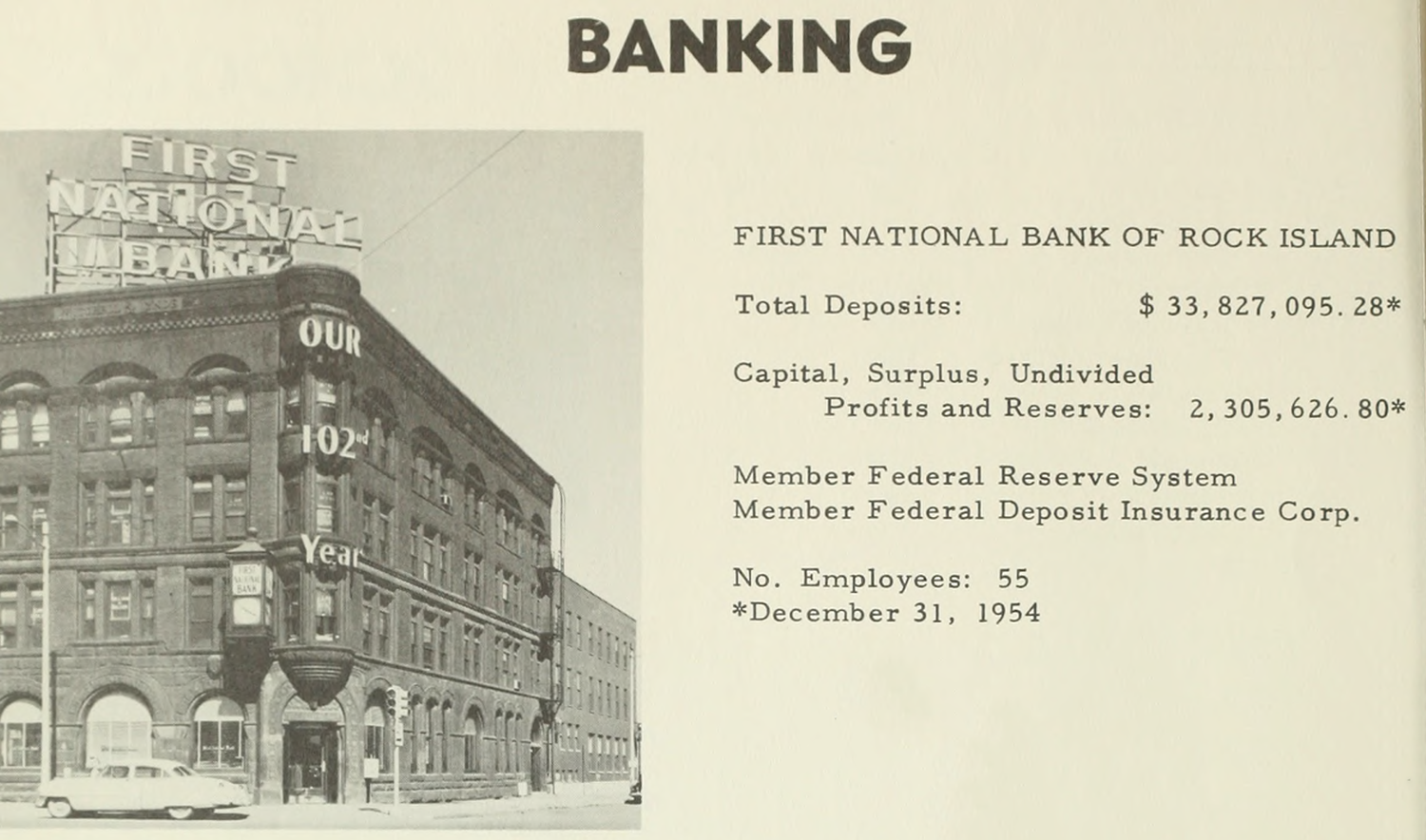
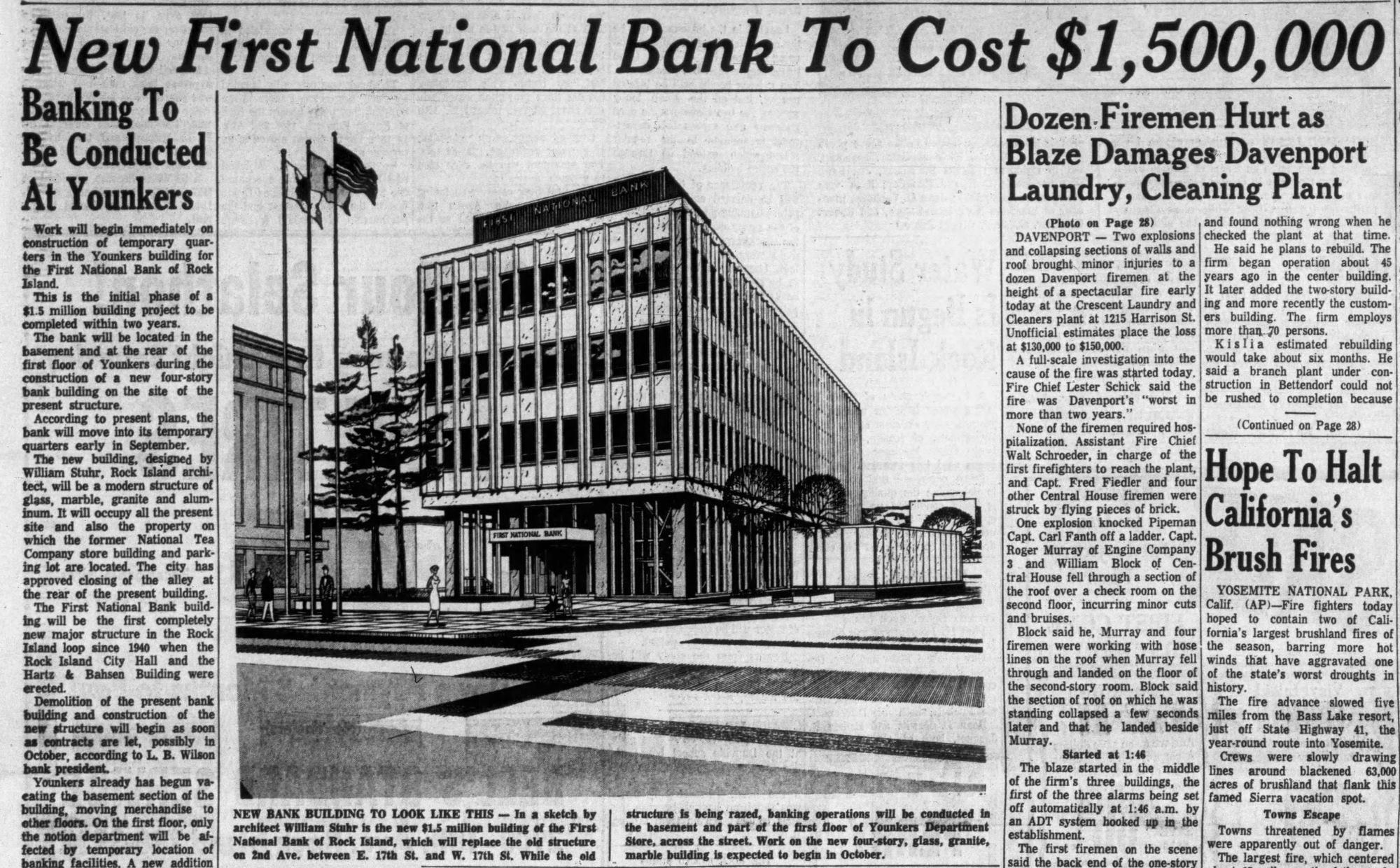

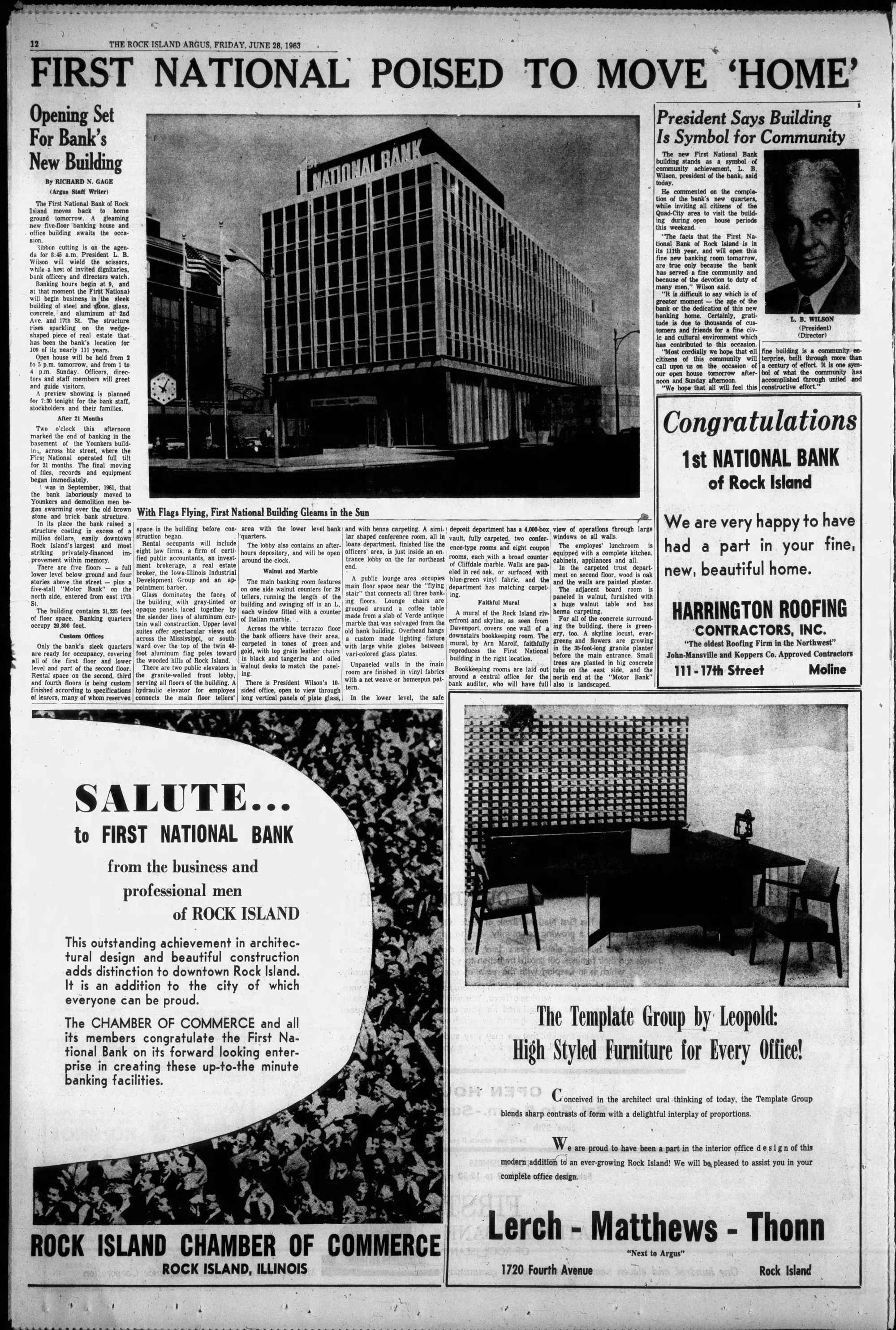
William Stuhr worked for Olof Cervin, eventually becoming partner, so Stuhr, Parkhurst and Appier was the successor to the firm that designed Rock Island’s Fort Theater, the Rock Island Masonic Temple, the Safety Building, the Weishar Apartments, and the Rock Island Argus building, etc. This was very much First National Bank keeping things local and hiring the big local firm for their showcase new headquarters.
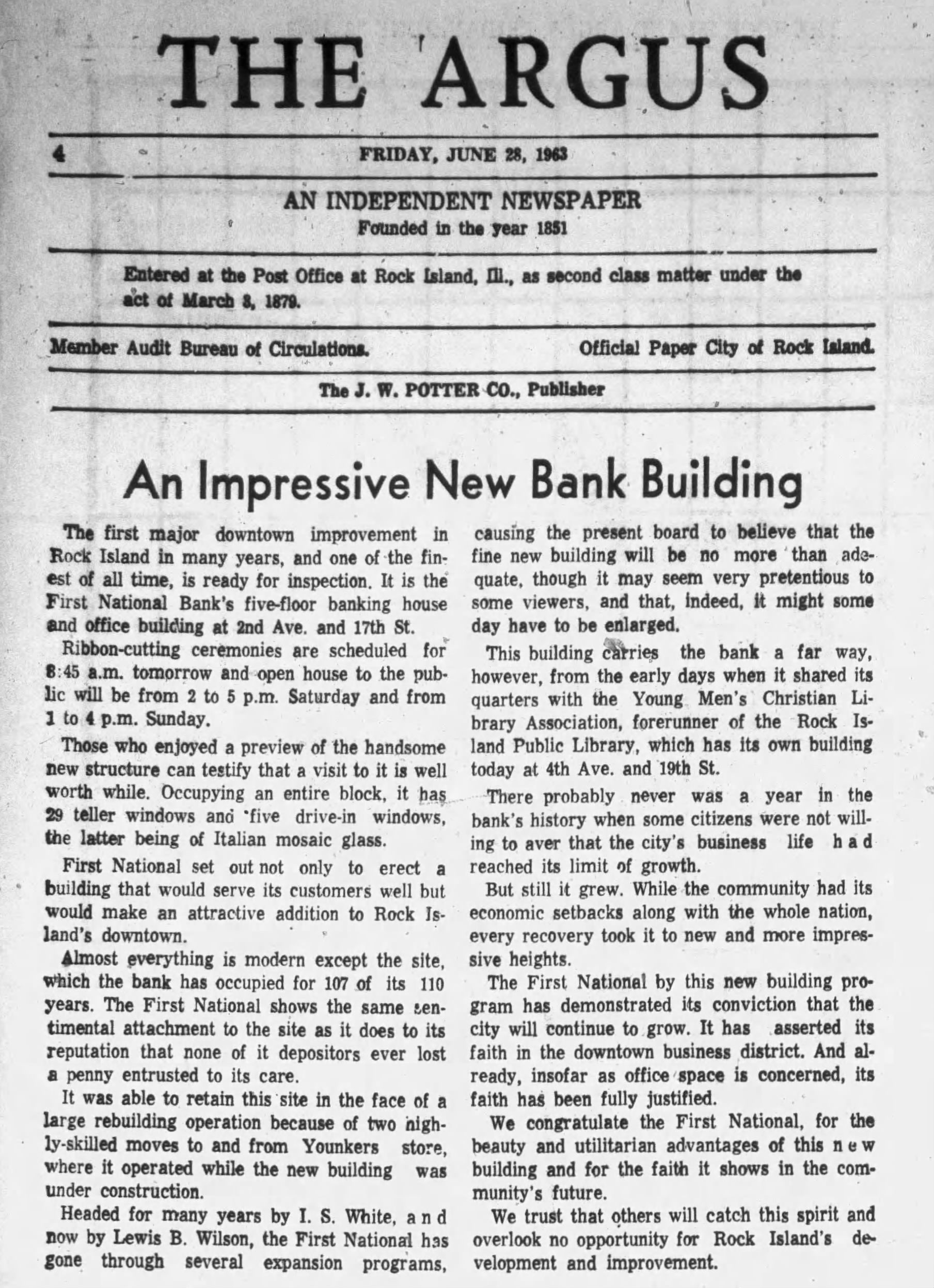
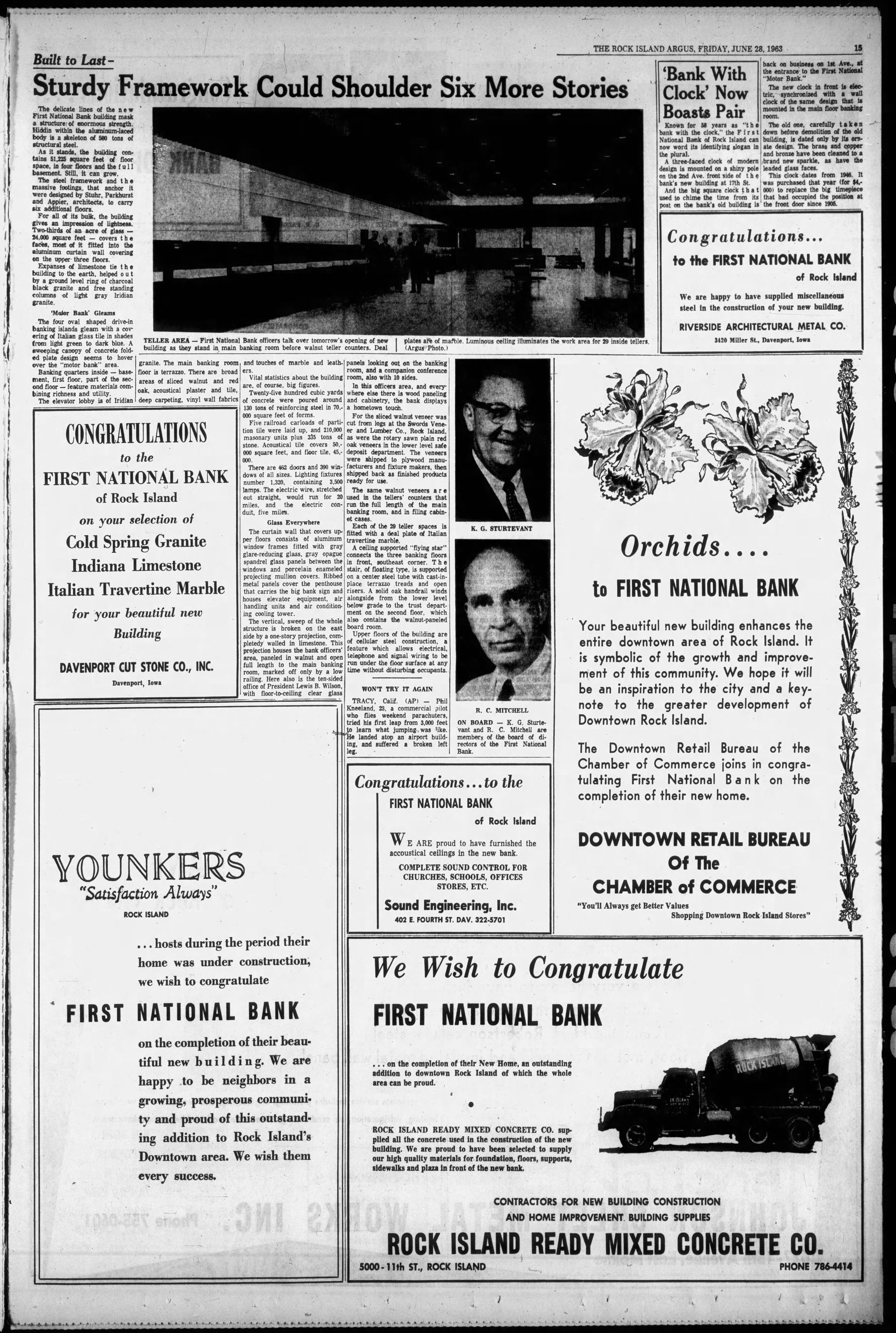
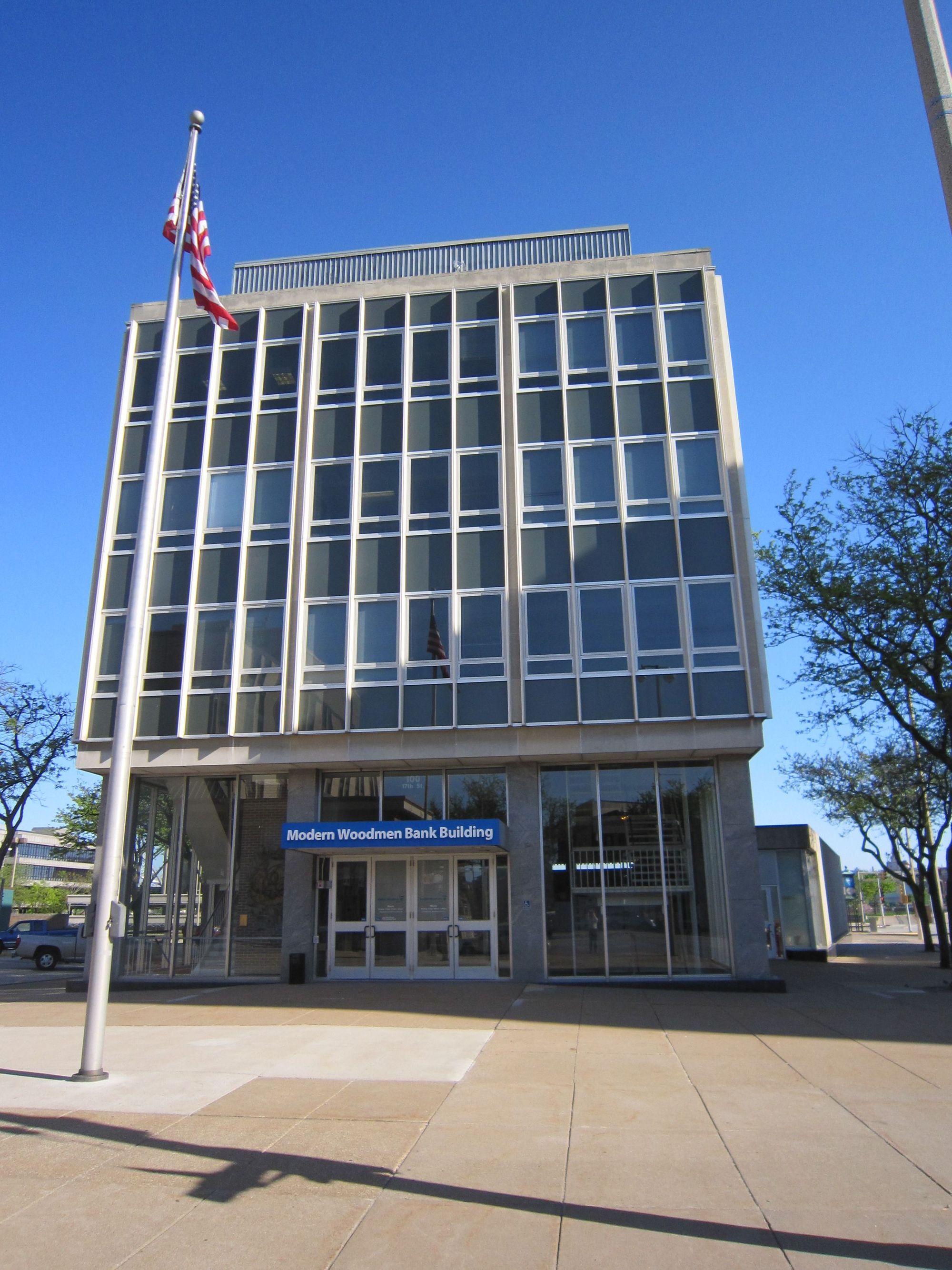
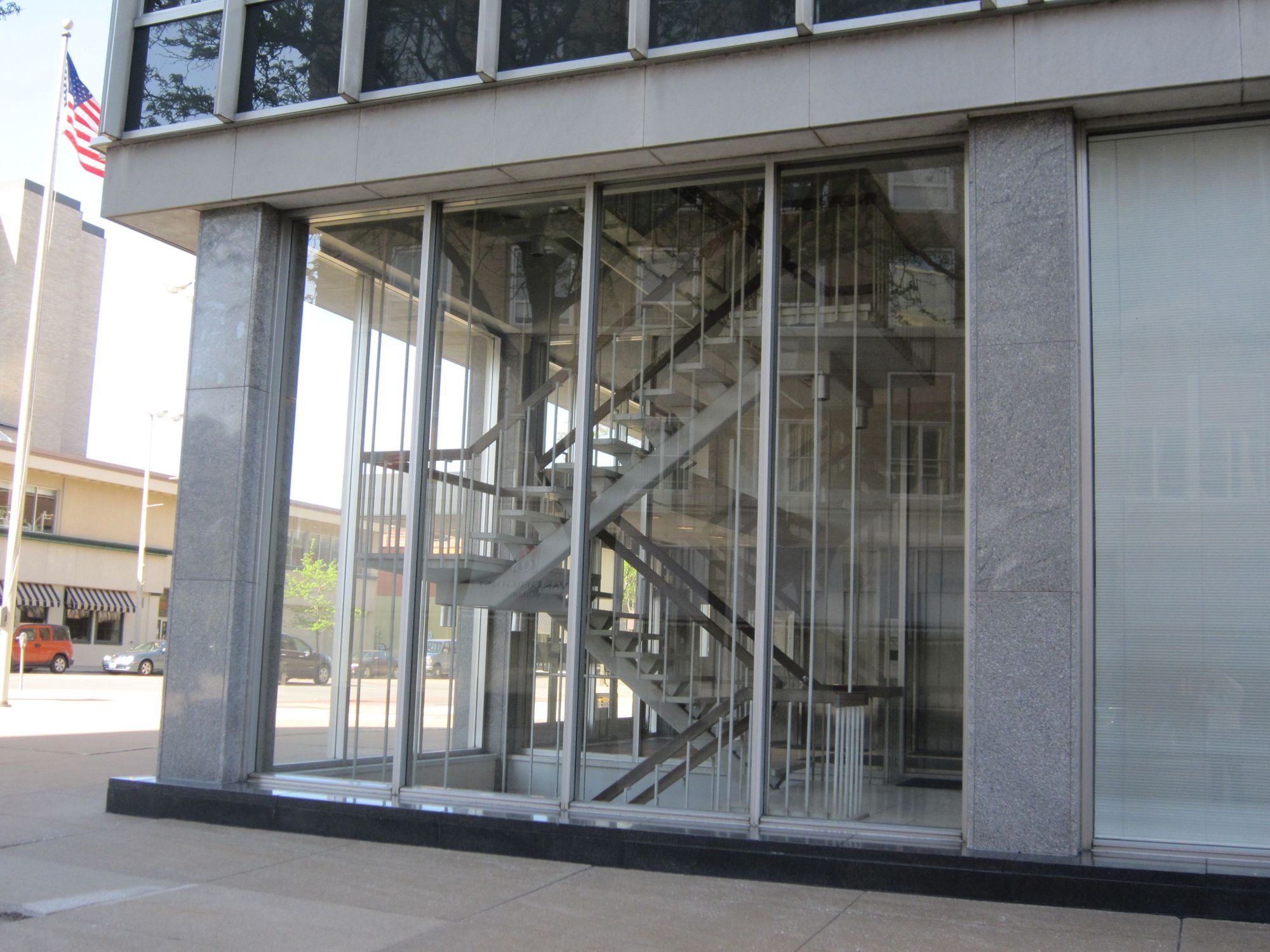
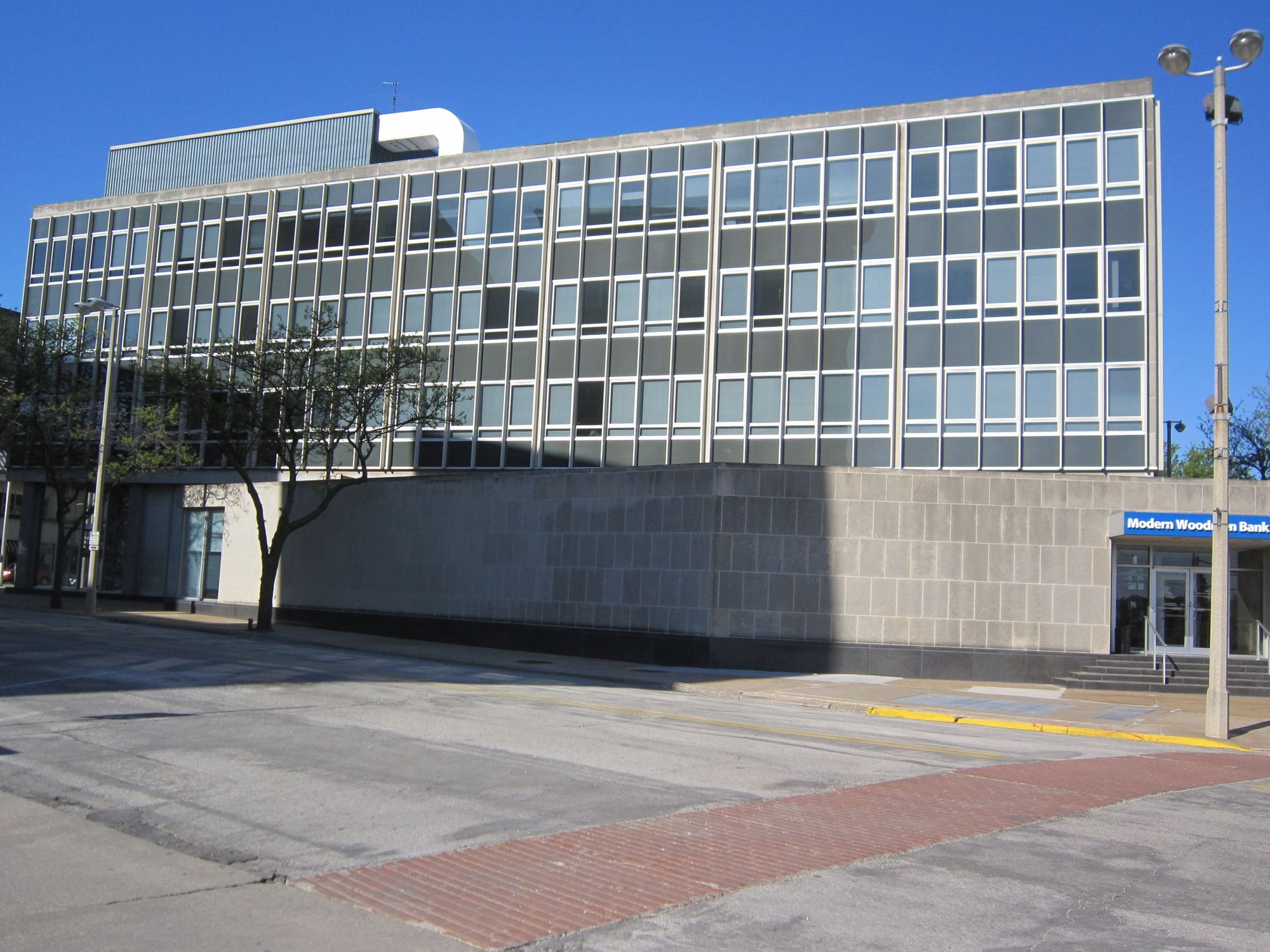
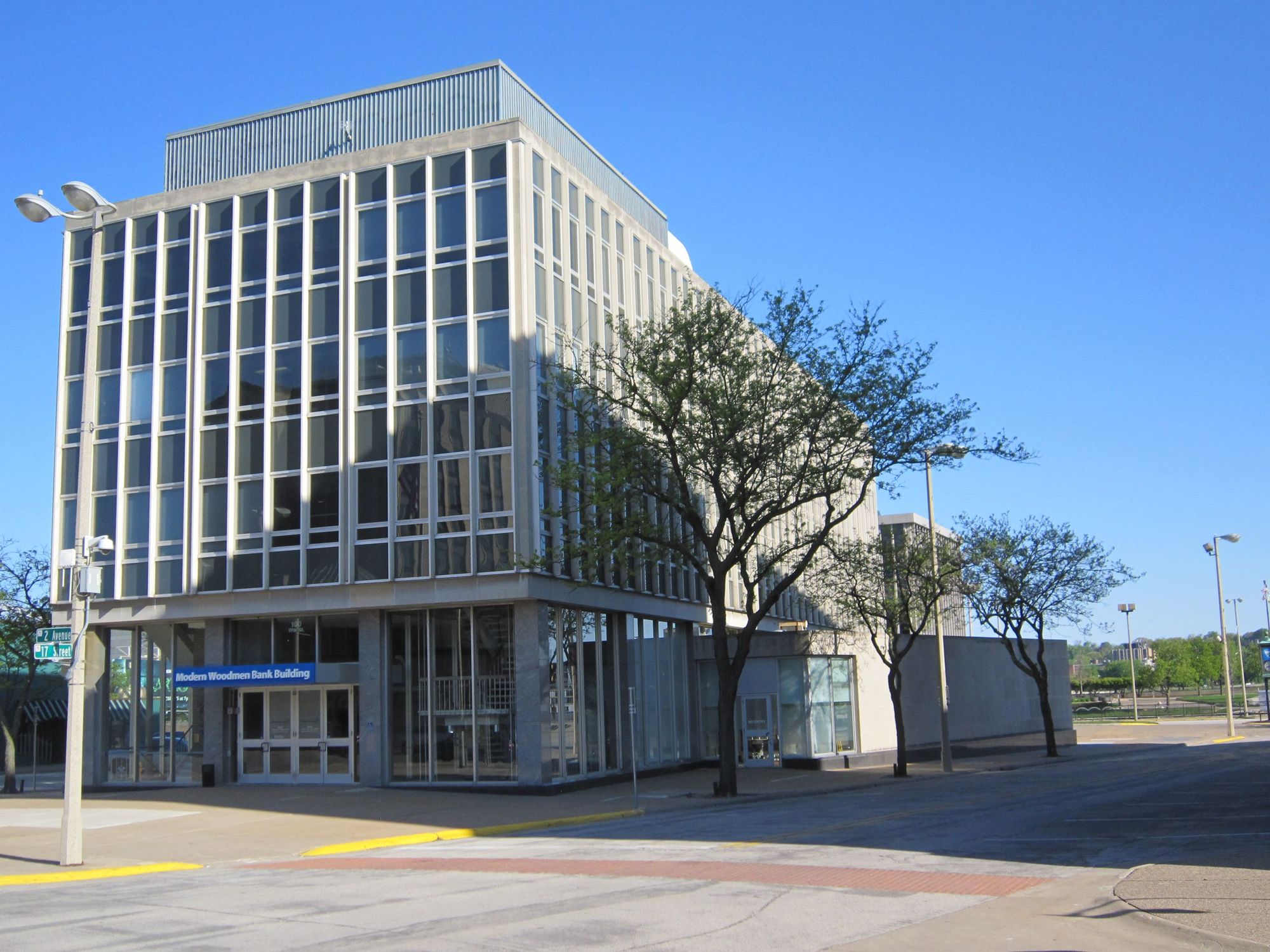
The design here, a classic example of Miesian modernism, was attributed mostly to Stuhr and William Appier. Glass and steel, a curtain wall, and an elegant little cantilever. In a sign of (perhaps ultimately misguided) optimism about the trajectory of Rock Island and the First National Bank, this building was constructed with future expansion in mind–structurally, it could’ve supported another six stories. The Modern Woodmen of America could’ve taken that kind of long-term approach. Instead…parking lot.
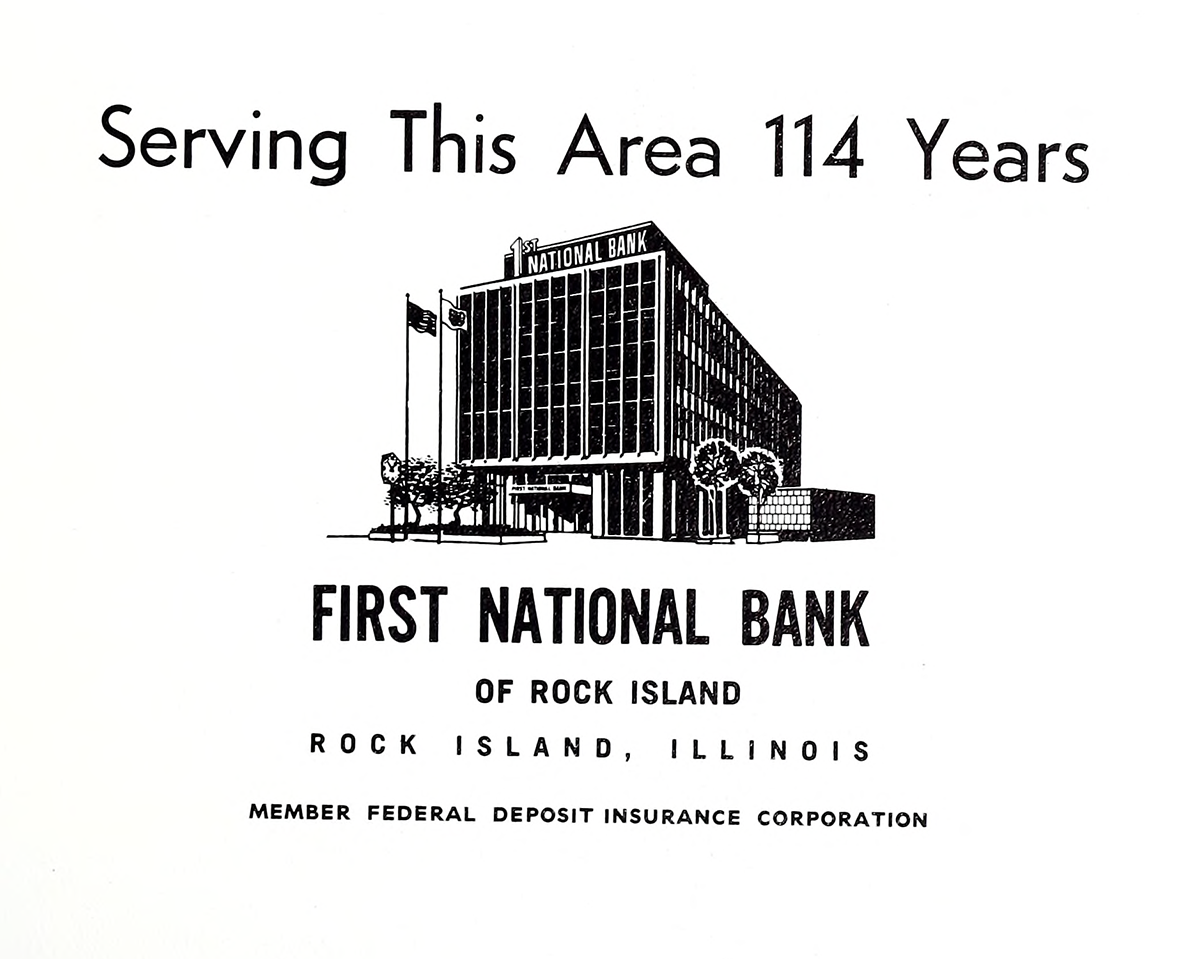
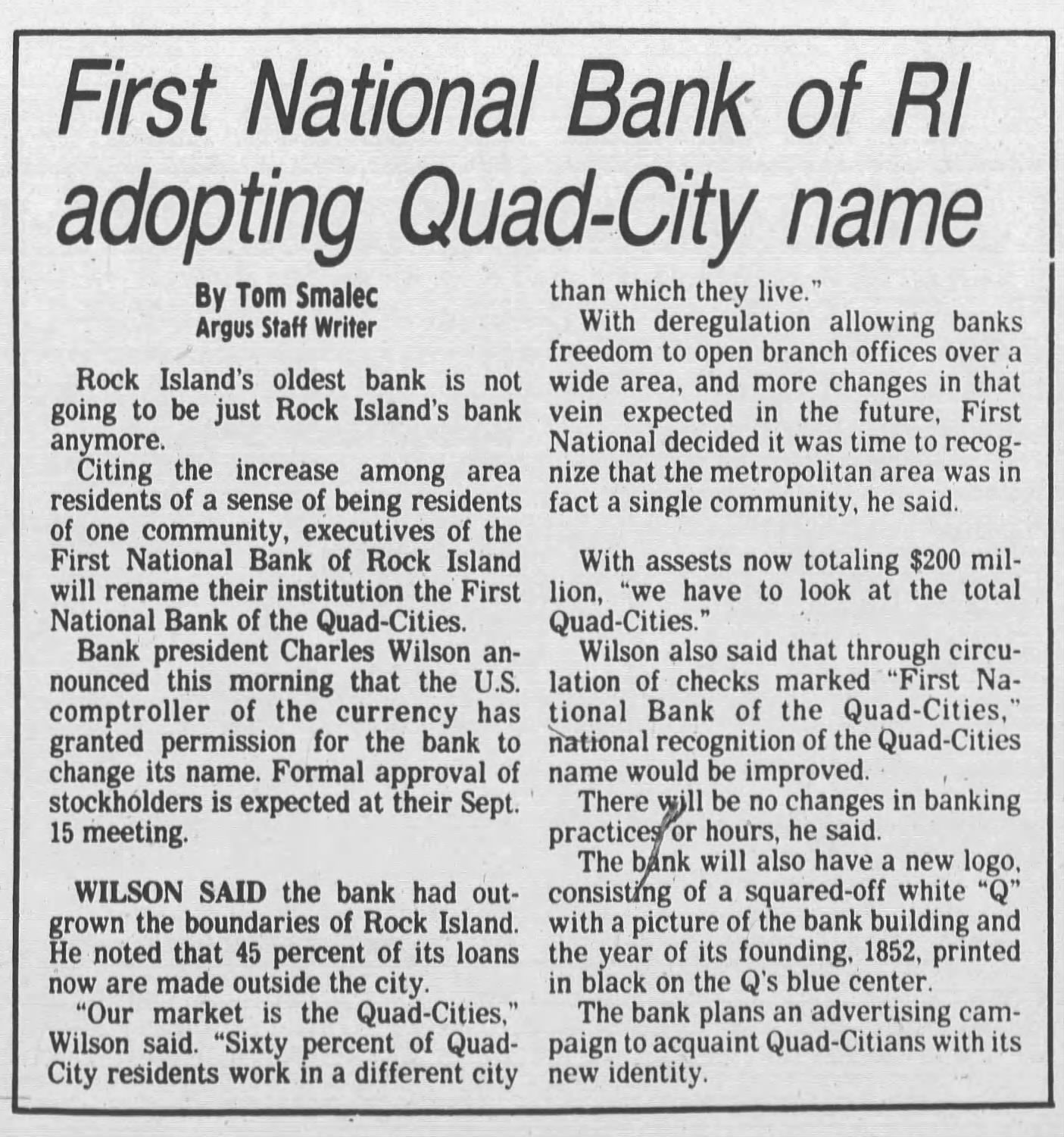
In 1981, the bank renamed itself the First National Bank of the Quad Cities, and later joined the orgy of regional bank consolidation in the 1980s. After an M&A spree snapping up small regional rivals, the National Bank of the Quad Cities was itself acquired by Cleveland’s National City Bank in the 1990s (National City collapsed during the financial crisis in 2008 and was taken over by PNC, which sold the remnants of First National to Wells Fargo).
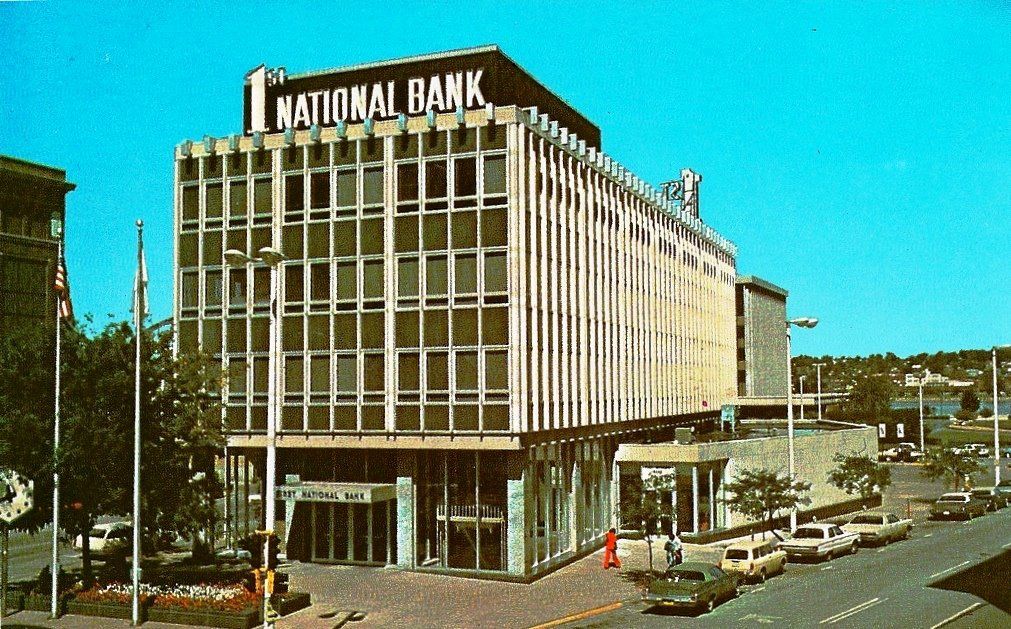
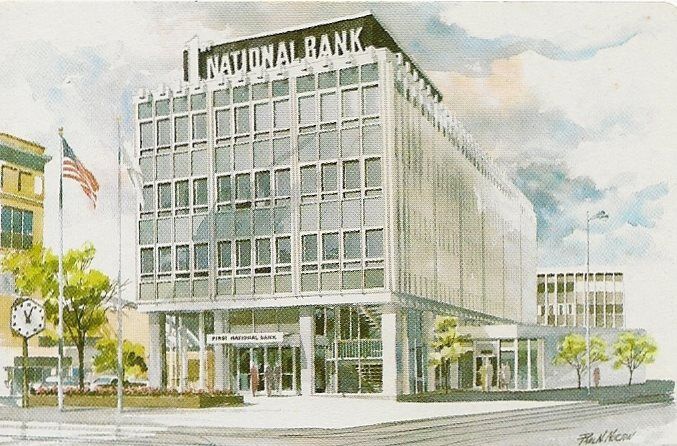
In 2000, National City sold the building to Modern Woodmen of America, a Rock Island-based fraternal benefit society along the lines of Thrivent, Knights of Columbus, or the Polish National Alliance. Amongst other things, MWA provides their members with life insurance–they’re the third-largest fraternal benefit society by assets in the US. From 2002 on, they used this building for MWA Bank and continued to lease out space to professional service firms.
However, the Modern Woodmen sold MWA Bank in 2018 and the building lost its anchor tenant. Unwilling to spend the money to renovate the 1960s office building, and with their HQ otherwise hemmed in by the Mississippi River, a park, and railroad tracks, the MWA started to make moves to demolish the building. A competing preservation effort sprang up, arguing that it deserved preservation as one of only two International style buildings in Rock Island and a historically significant and established visual feature of the community. It appeared that they’d succeeded when the Rock Island Historic Preservation Commission unanimously voted to designate the building a landmark in January 2020, but the Modern Woodmen appealed to the city council, arguing that renovation was too costly and that they’d leave the building vacant if the landmark designation stood. After reassurances that they wouldn’t just turn the site into a parking lot after demolition, with promises that the Modern Woodmen had a partner lined up for a multi-million dollar redevelopment, the city council voted unanimously to overturn the landmark designation. In a darkly comic twist, just a few weeks later the National Parks Service added the Downtown Rock Island Historic District to the National Register of Historic Places, including the First National Bank Building as a contributing property.
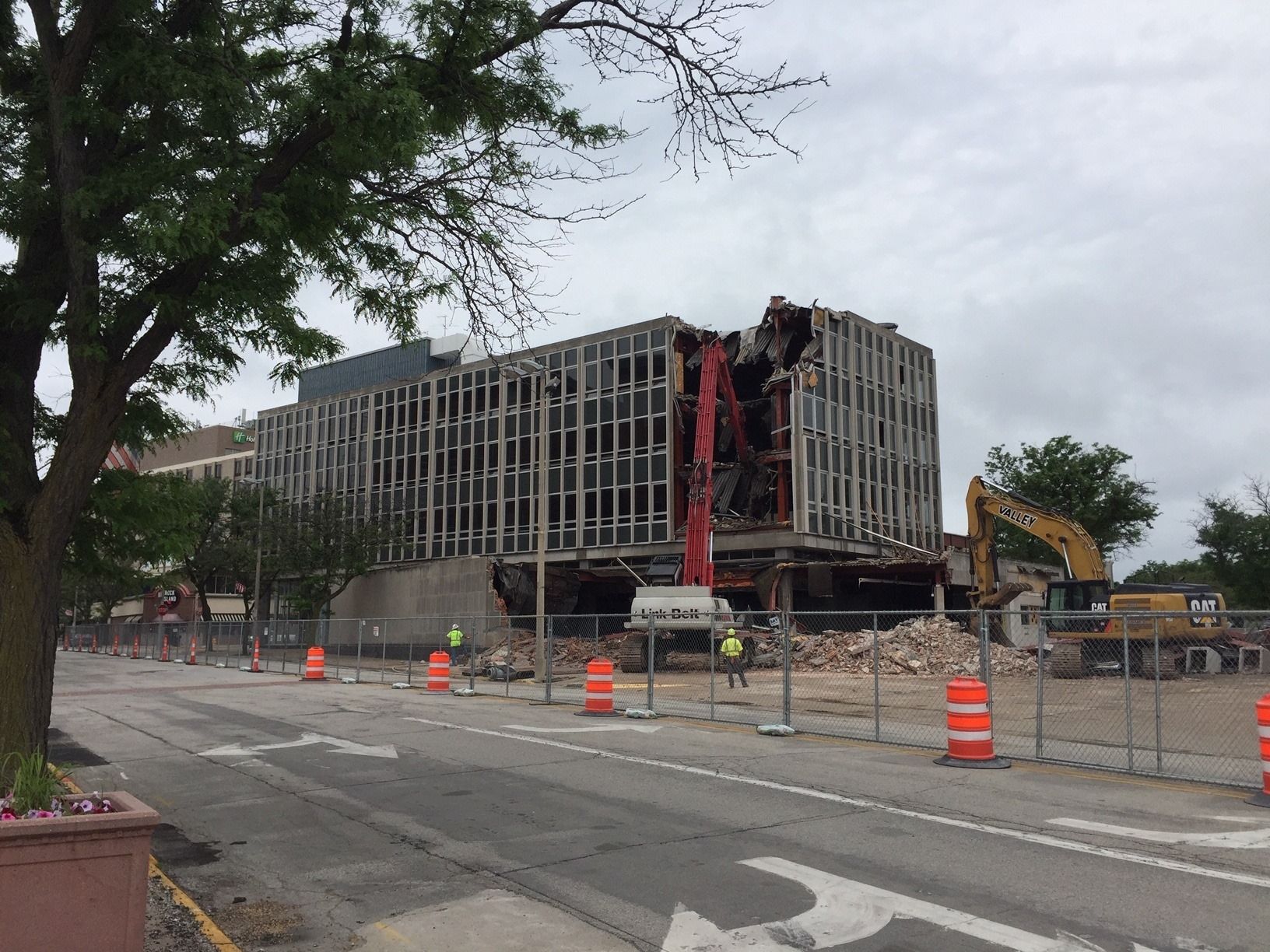


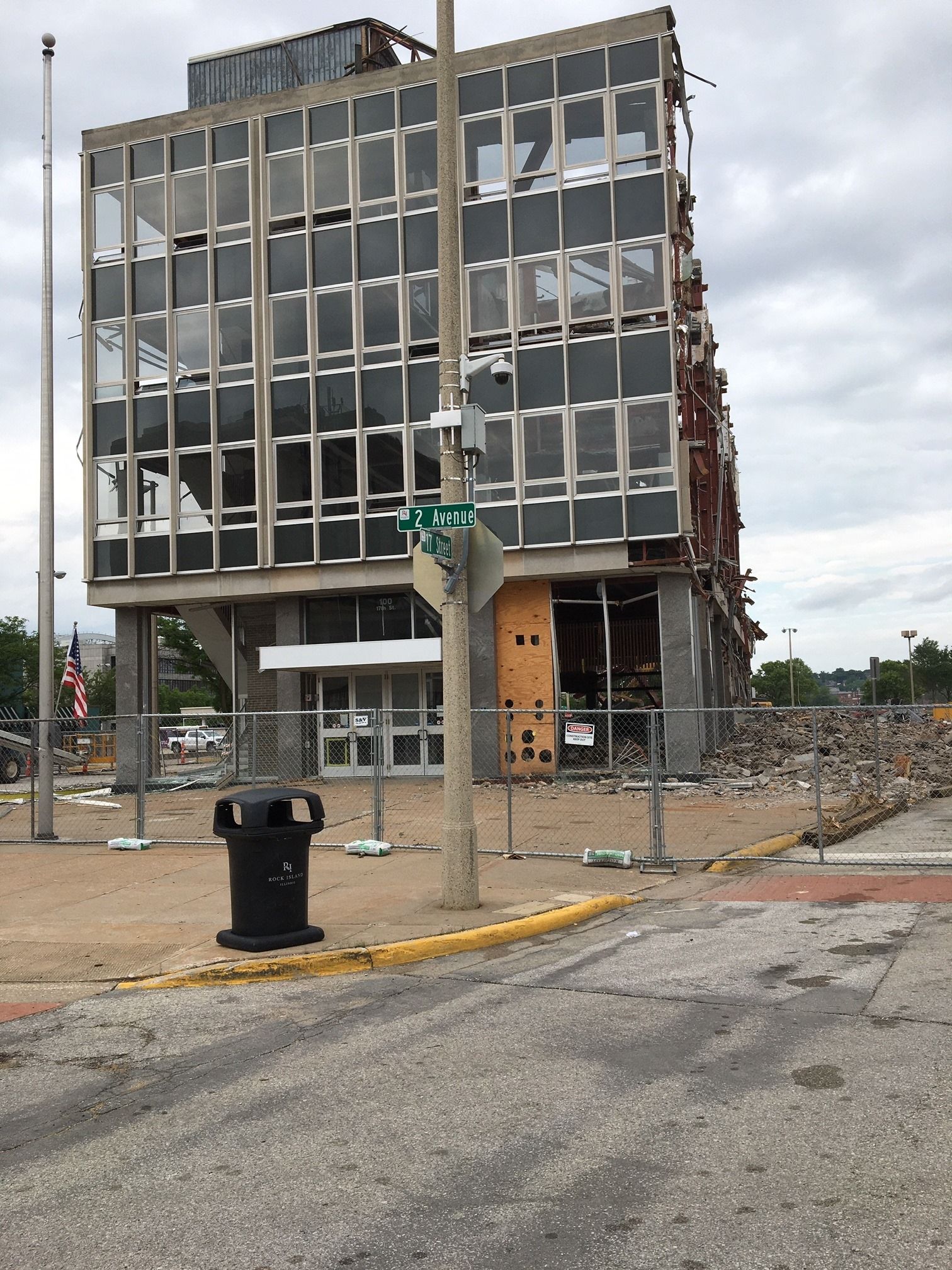
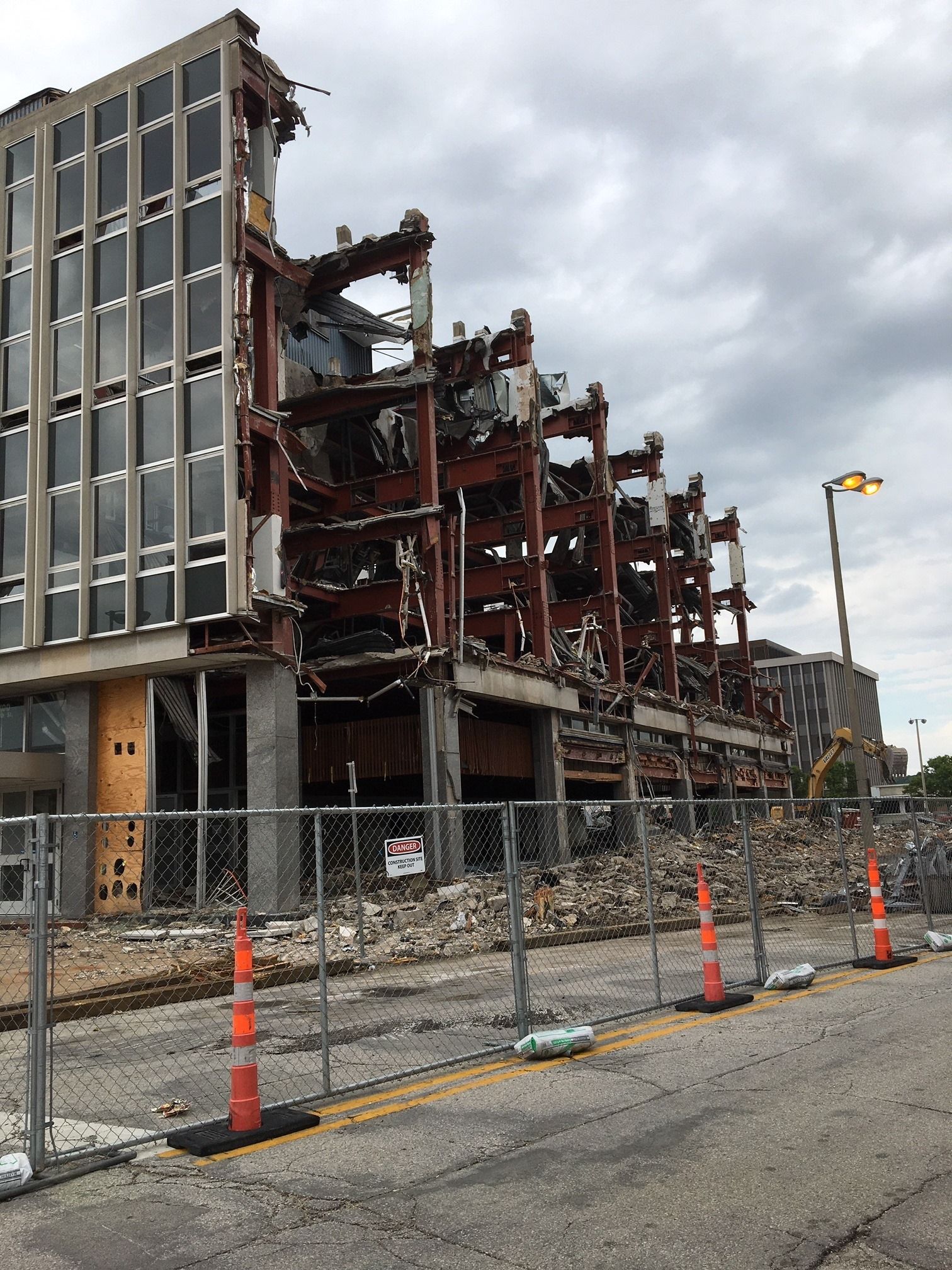
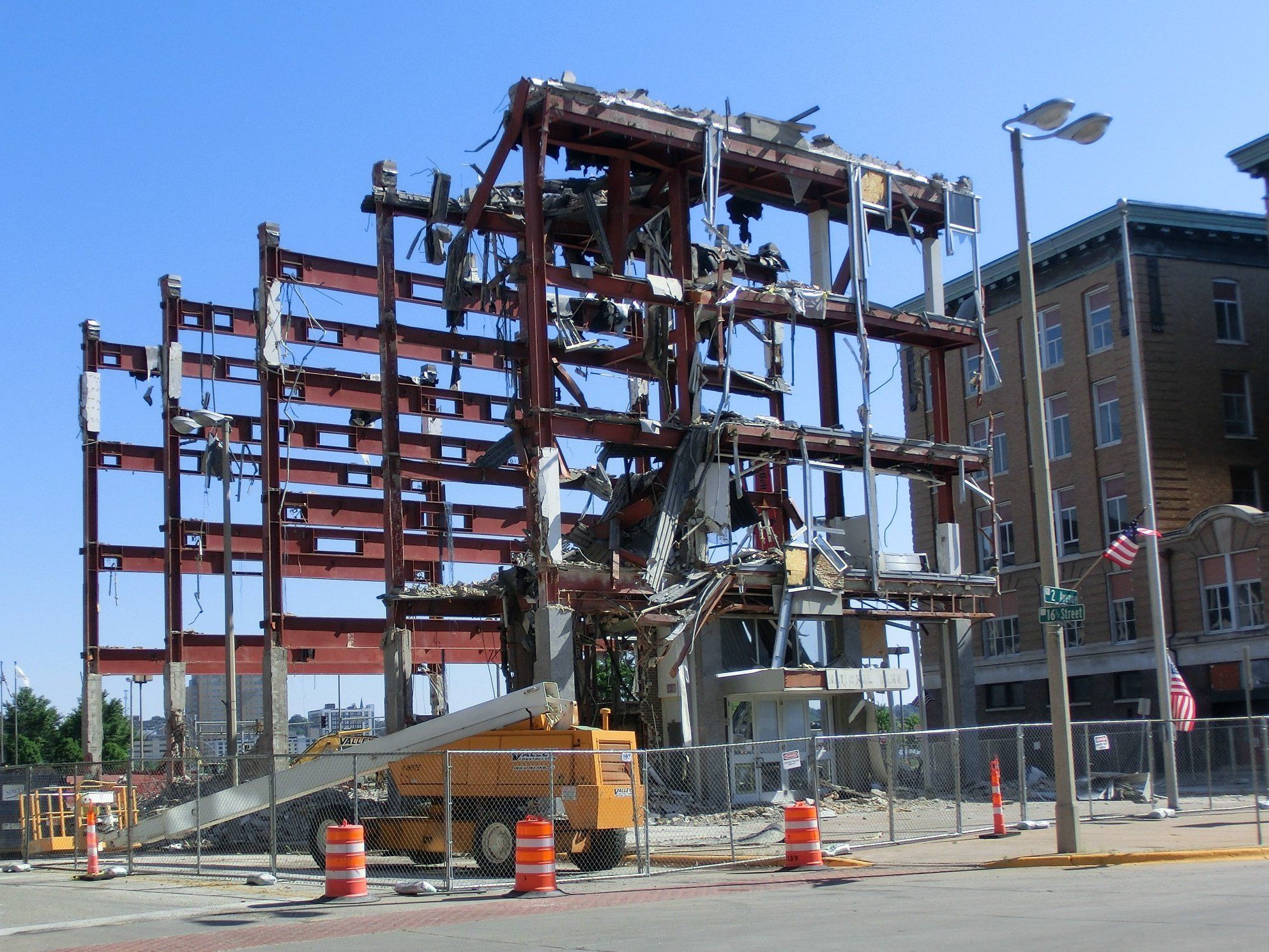
Demolition began in May 2020. Predictably, and despite MWA’s assurances, three years later the site remains a parking lot. With commercial real estate in a downturn and companies downsizing their office footprints, it looks like it’ll remain one for quite a while.
Production Files
Further reading:
- The 2019 landmark application for the building (pdf)
- A typically excellent post from the Rock Island Preservation Society about the building
- The NRHP nomination for the Downtown Rock Island Historic District, with the First National Bank Building included as a contributing property
- On the city website
- In the Quad City Times: Rock Island votes to take away landmark status of 1st National Bank building
- In the Rock Island Argus: Longtime Rock Island building to be demolished. It opened as 1st National Bank in 1962
- ...a counterview that I do not agree with or appreciate about the demolition, but for balance's sake, "Marx: The pile of rubble in Rock Island warmed my heart"
- A nice tidbit in this Rock Island Preservation Society about discovering a mural in the basement during the demolition (pdf)
- The predecessor building on the site
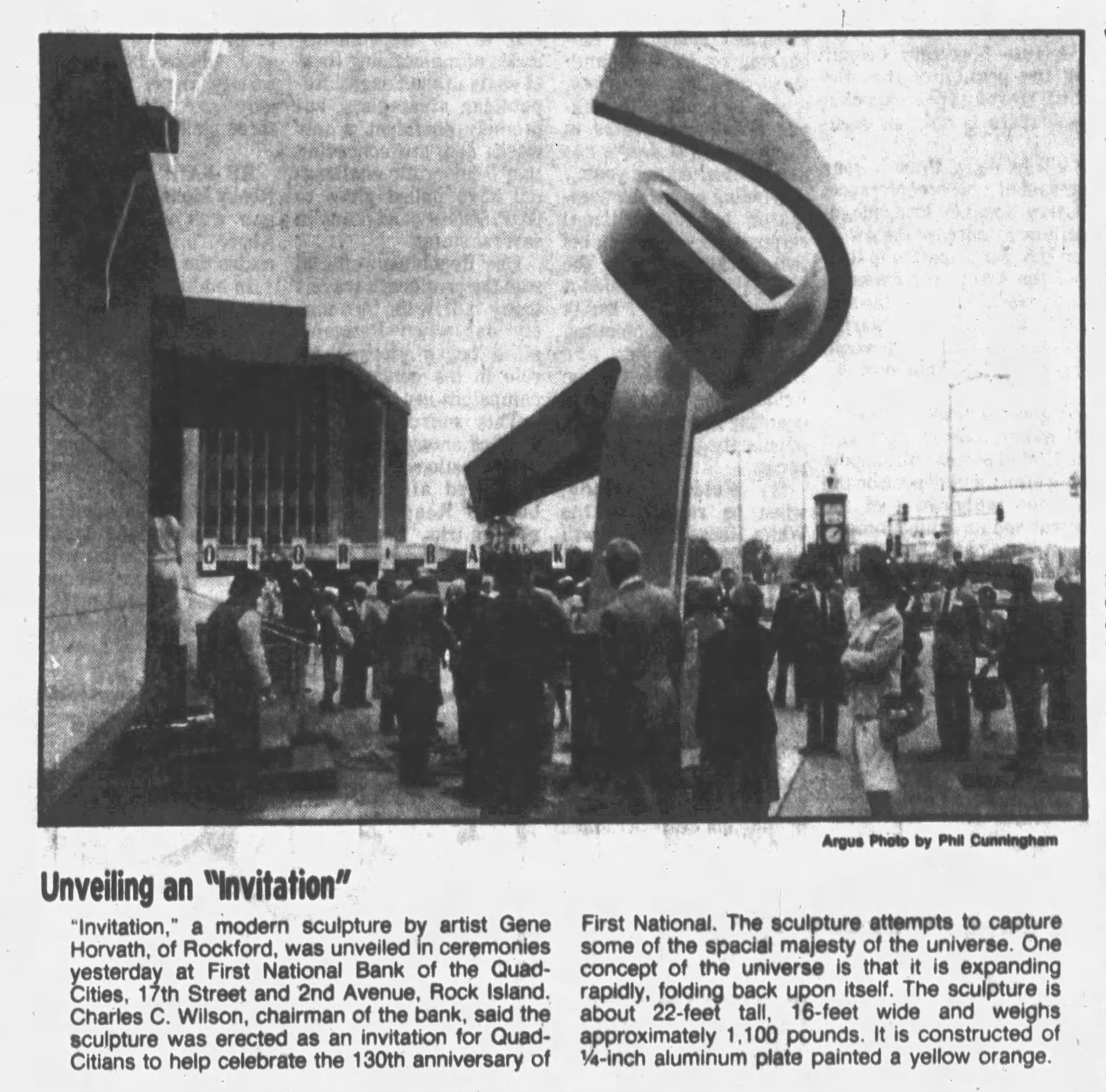
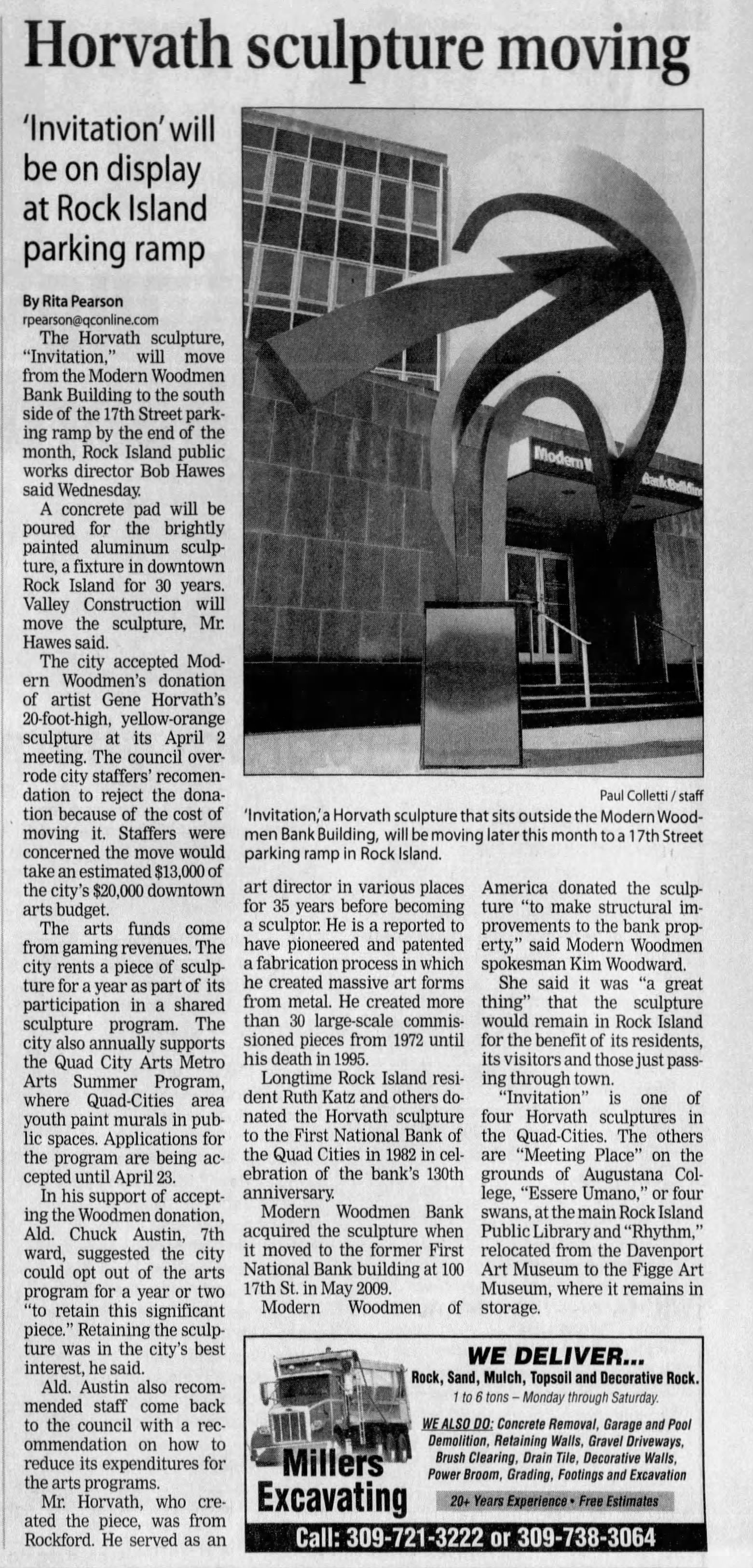
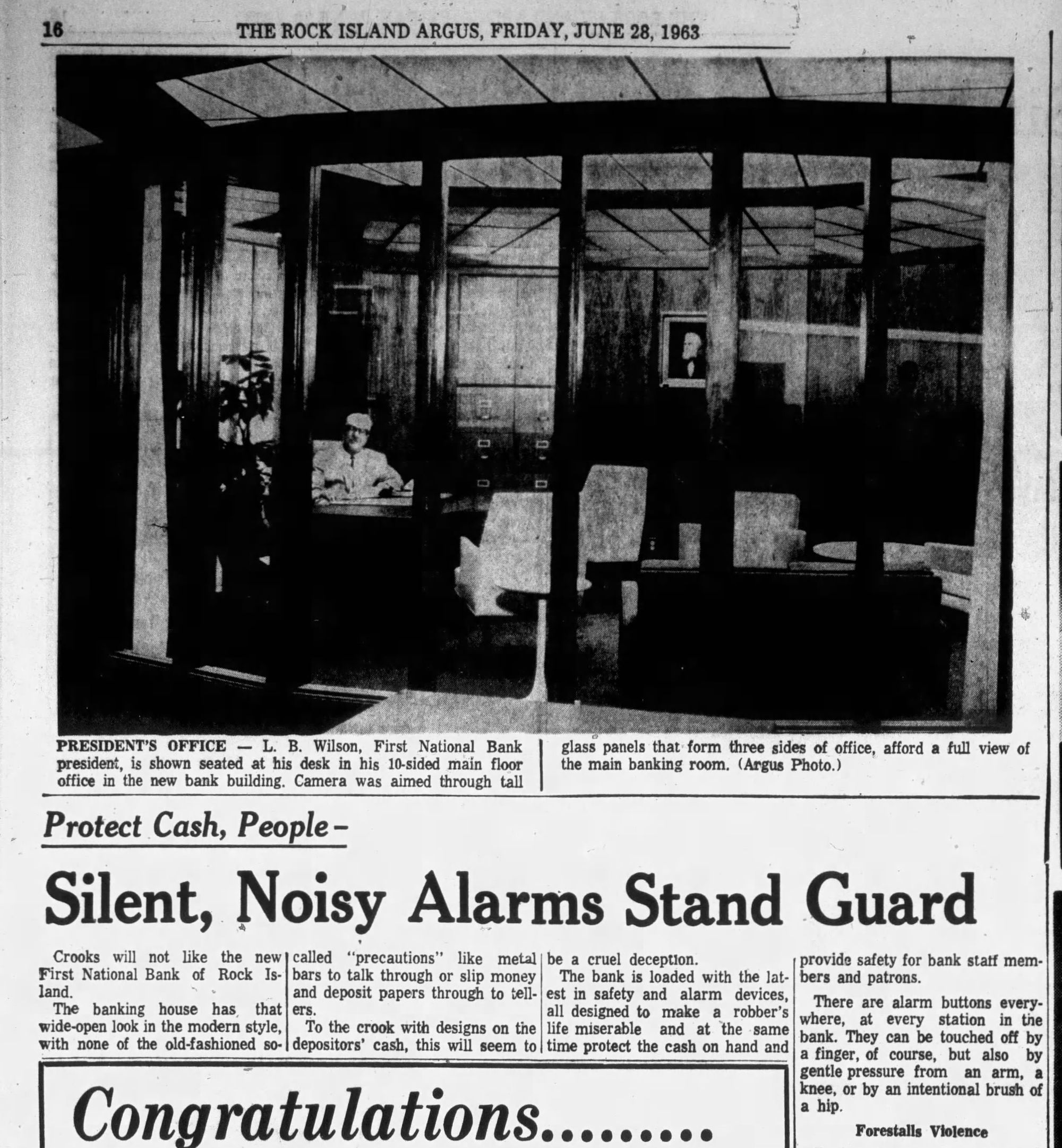

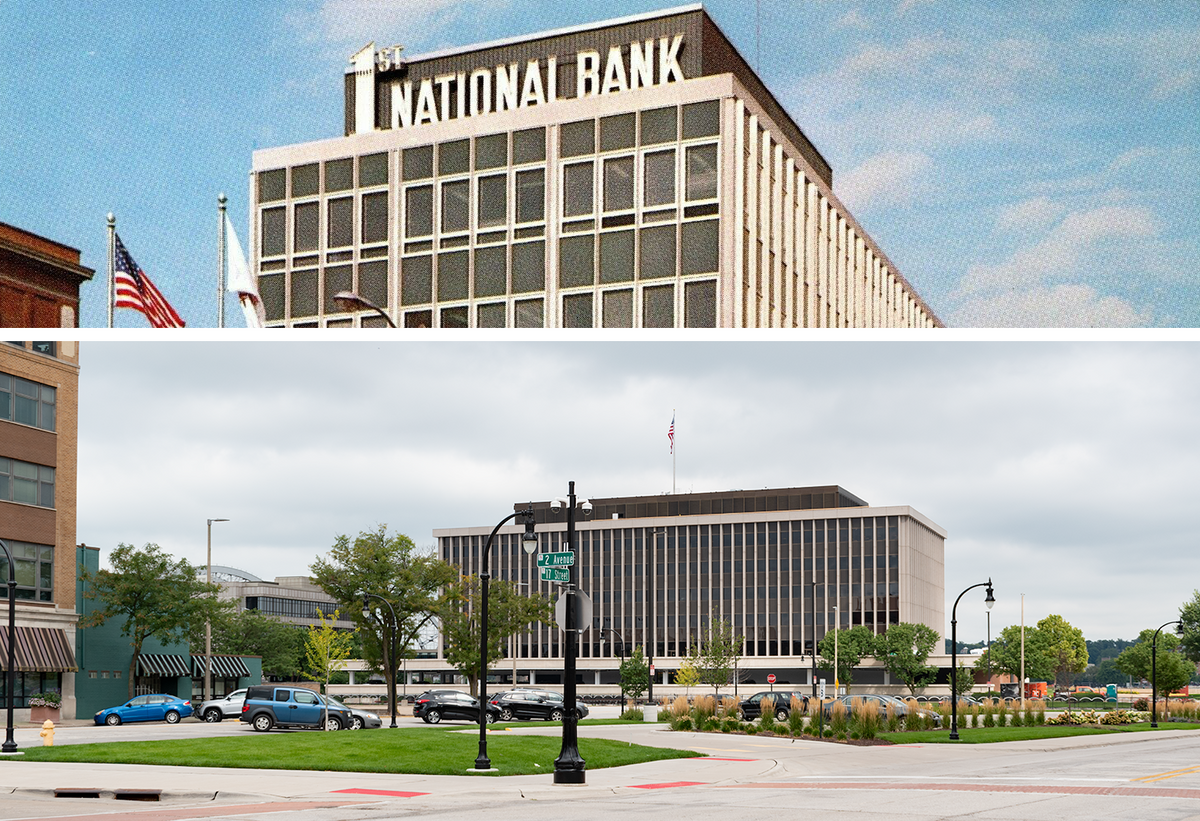
Member discussion: